5 August 1778 Wednesday
From this point forward, Laura's and Francesco's work this year are a requisite part of Piranesi's 1778 history, and, further via Francesco, the Piranesi enterprise very much continued in an historically modern, or simply turn-of-the-page way.
Contemporaneously, any discussion regarding the Ichnographia Campus Martius, from this point forward, must distinguish whether it is the first state ichnographia or the second state ichnographia that is being referred to, otherwise the said discussion bears no consequence.
Artifacts of the Bianconi vs Piranesi 'Circus of Caracalla' affair 1772-1789
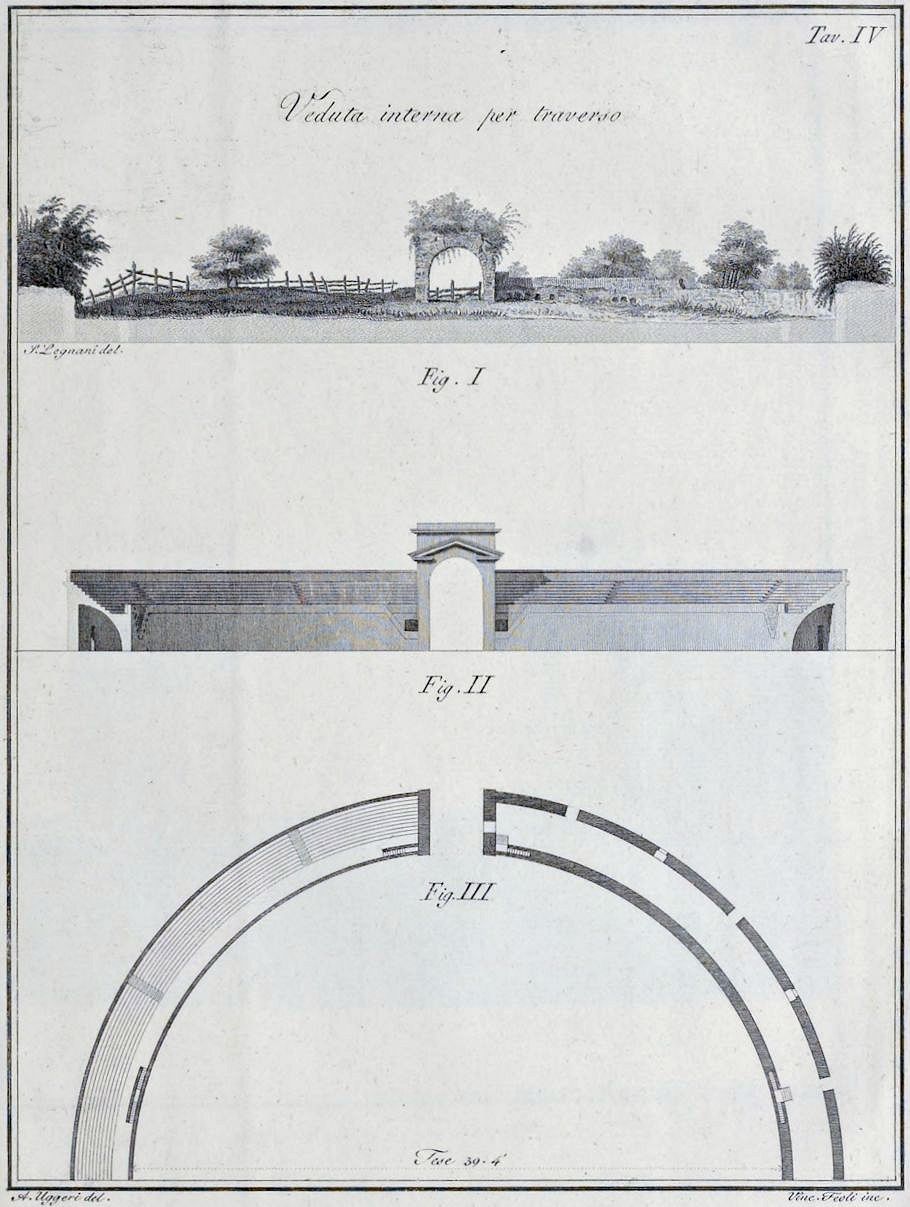
Tavola IV Internal views in cross-section.
Fig. I. Ruin
Fig. II. Restoration
Fig. III. Plan divided into ground floor on the right, and upper left
"It was not enough for our craftsman [Piranesi] to excel in engraving, he wanted to add learned descriptions and antiquarian research to his output, to which his often strange and new, and more often visionary, ideas were to serve as nourishment. But how to do this, if he lacked the necessary capital for such a purpose, and the knowledge of the two learned languages, without which there is no solid erudition? He dexterously defied various distinguished men of letters, who, in love with his genius and his burin, did not disdain to work for him, composing famous treatises corresponding to such beautiful prints, and they had the generosity to allow him to publish them under his name. Do not hesitate to include in this number Monsignor Bottari, the learned Jesuit Father Contucci and various others, whom we deem useless to name here. Rome, therefore, from time to time saw the release of titanic volumes of highly learned prints and dissertations authored by someone barely able to read them, although he could later give a good account of it, but in his own way, to those who spoke to him about it."
Giovanni Lodovico Bianconi 1779
Bianconi speaks of Piranesi's "lack of necessary capital" with regard to textually communicating ancient Rome's architectural history, whereas Il Campo Marzio's 'Ichnographia' and 'Catalogo' brilliantly demonstrate Piranesi's abundance of necessary capital with regard to graphically and textually communicating ancient Rome's architectural history.
47 y.o. Francesco Piranesi 1805
Le Antichità della Magna Grecia Parte II
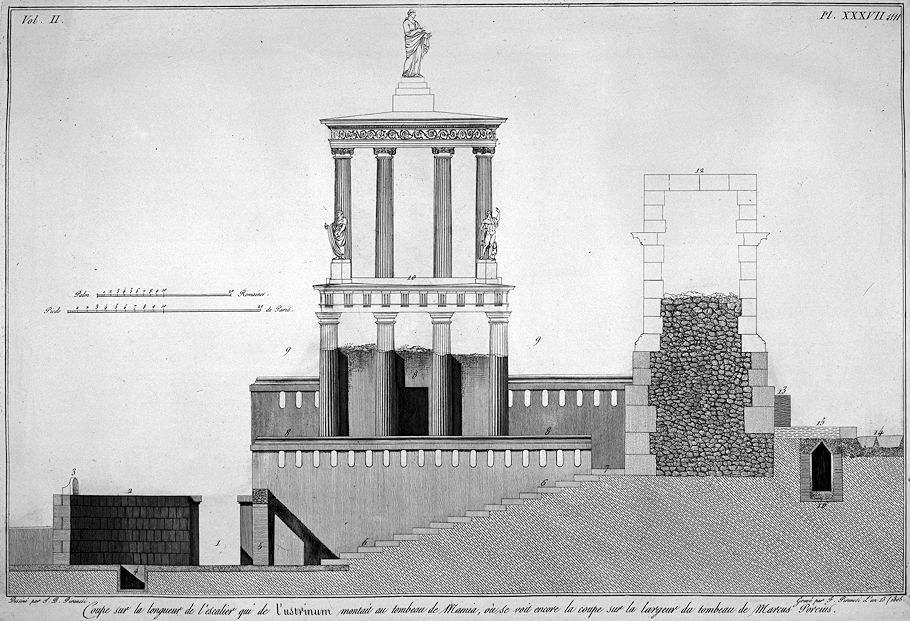
Section along the length of the stairway leading from the ustrinum to the tomb of Mamia, where the section across the width of the tomb of Marcus Porcius can still be seen.
Drawn by G.B. Piranesi
Engraved by F. Piranesi Year 13 (1805)
5 August 1812 Wednesday
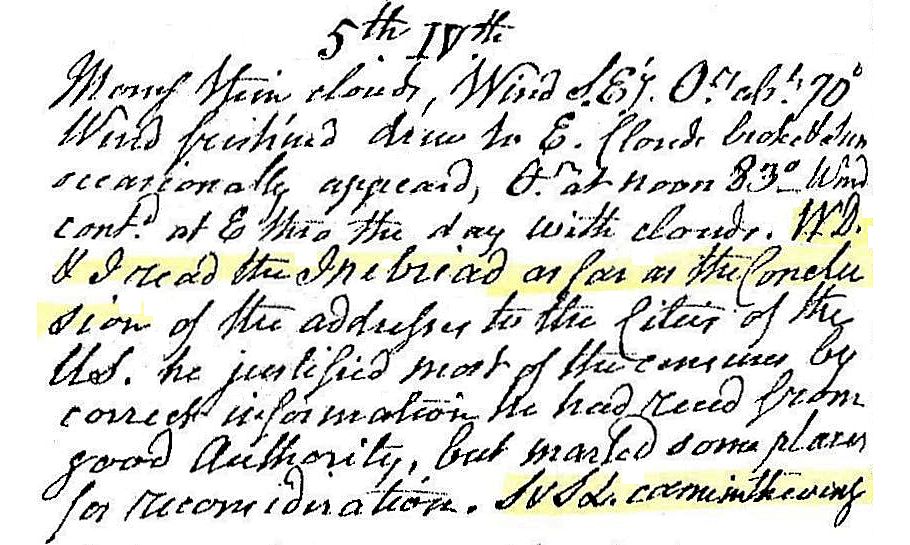
Morning thin clouds, wind SEerly, temperature about 70°. Wind freshened, drew to E, clouds broke and sun occasionally appeared. Temperature at noon 83°. Wind continued at E through the day with clouds. W.D. and I read The Inebriad as far as the conclusion of the addresses to the cities of the US. He justified most of the consensus[?] by correct information he had read from good authority, but marked some places for reconsideration. S and SL came in the evening.
5 August 1984
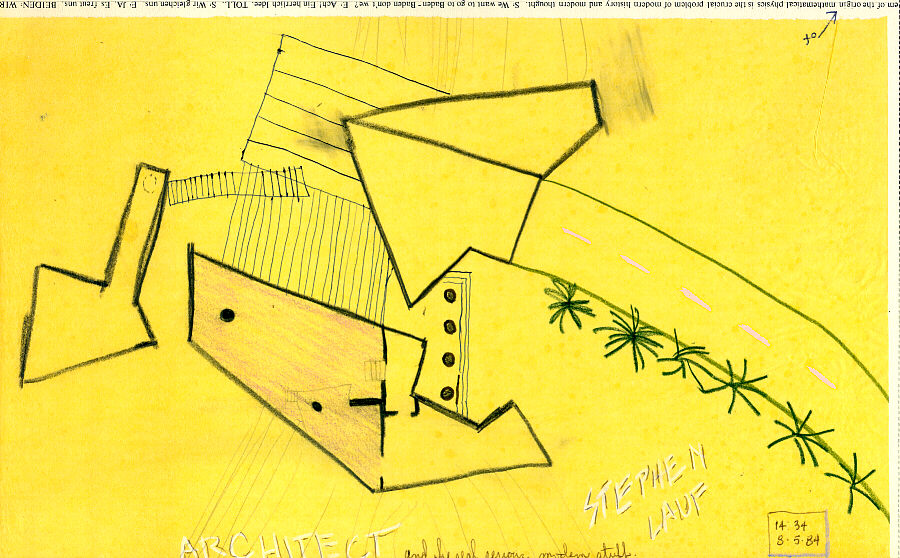
2 = odd, Dick 015 detail
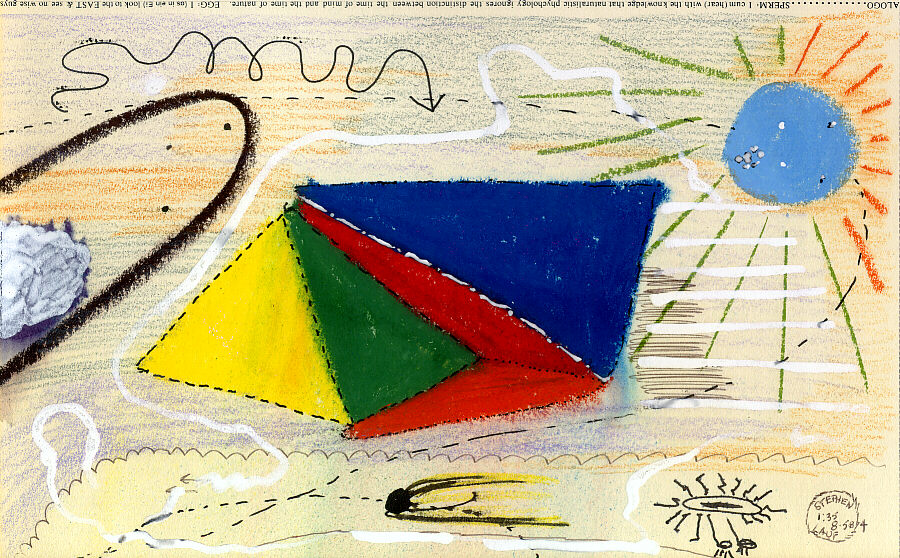
2 = odd, Dick 019 detail
5 August 1997
Campo Marzio index
Beginning the analysis of the Campo Marzio with Mars leads directly to the triumphal way and the long axis, hence the promenade architecturale and the axes of life and death. Then discuss the equiria and the military axis.
architectural promenade
...the new ideas re: the architectural promenade that developed because of the Danteum. Essentially, the Danteum has the same sequential series of architectural "events" as the formula for the architectural promenade that I have extracted from Le Corbusier and Stirling. The Danteum, however, adds the element of a journey from the profane to the sacred, and this addition significantly opens up the interpretive field and the buildings that can now be included as exhibiting the architectural promenade formula.
With regard to the profane/scared aspect, the triumphal way within Piranesi's Campo Marzio exhibits the same sequence. The procession (promenade) begins at the Templum Jani, a tetrahedron, which is the forest, the pilotis that raise the box. From there the route jaggedly marches through the "theater district" (downtown)--this is hell, the profane, the lower level. Just as the "way" approaches the Banks of the Tiber for the first time, the procession becomes straight and passes repetitive / monotonous buildings. The way remains perfectly straight except for two 90 degree turns, and this course comprises the greatest length of the promenade. (The straight portion of the procession passes, in sequential order, the Hecatonstylon and the outer niched wall of the Horti prius Pompejani deim Marci Antonii; then the long portico of the Stadium opposite the Domus Alexandri Severi; and across the river between the Porticus Hadriani and the Sepulchrum Libertorum et Servorum of the Bustum Hadriani. These buildings well exemplify the notion of inside/outside, thus tying the triumphal way more closely to the architectural promenade formula.) In the course of this long march, the procession crosses over from the area (of the Campo Marzio) that primarily represents life (inside/outside -- osmosis connection?) into the area that is primarily of death (the Bustum Hadriani). This is the same transition as in the Danteum's Purgatory, and the middle inside/outside level of the Villa Savoye (etc.). Ultimately, the Triumphal way ends at the Templum Martis, easily the most sacred place/space of the Campo Marzio. This culmination to the triumphal procession is analogous to the Paradiso of the Danteum, and to the solarium of the Villa Savoye (etc.). Of course, this has major implications towards my previous analysis of the Triumphal Way.
5 August 2005
Brideshead Revisited
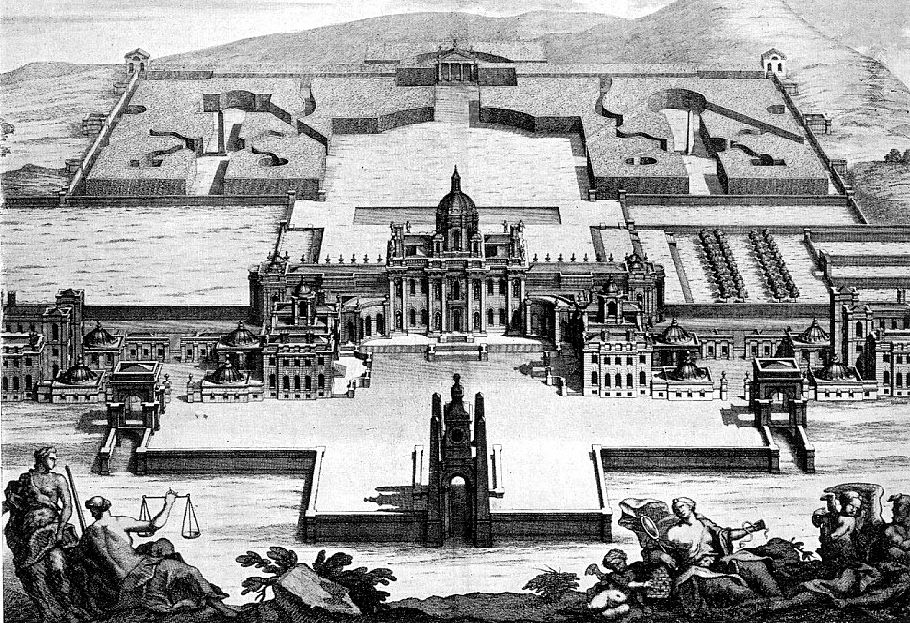
I'm now wondering whether the above image of Castle Howard from Vitruvius Britannicus (published 1715-1725) somehow inspired the architecture of Piranesi as delineated within Il Campo Marzio (1762). Remember the Ichnographia of the Campo Marzio (1757-62) is dedicated to Robert Adam. Did Adam show Piranesi Vitruvius Britannicus while he (Adam) was friends with Piranesi in Rome in the 1750s? In any case, the perspectival vantage point and indeed the architecture depicted within the perspectives of the Campo Marzio very much evoke the Castle Howard aerial perspective, for example the Frontispiece of the Campo Marzio:
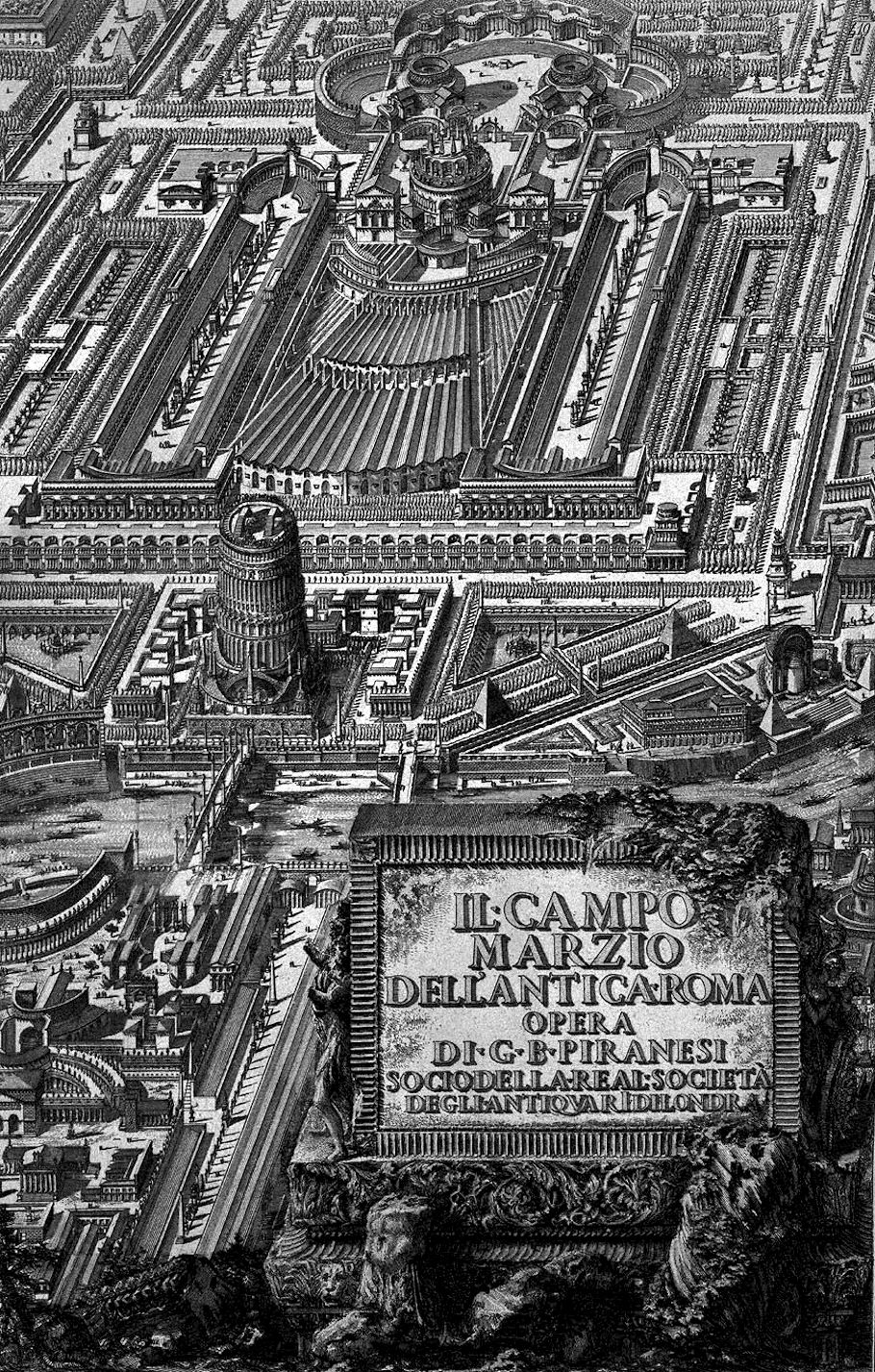
Brideshead Revisited
I forgot to mention this before--the Castle Howard-Ichnographia Campus Martius connection may also be found in some of Piranesi's individual plans within the large plan. For example, the Porticus Gratiani, Valentiniani et Theodosii somehow reminds me of the plan of Castle Howard--the plans are not what you would call 'alike,' but they both strive for maximum effect through minimum means.*
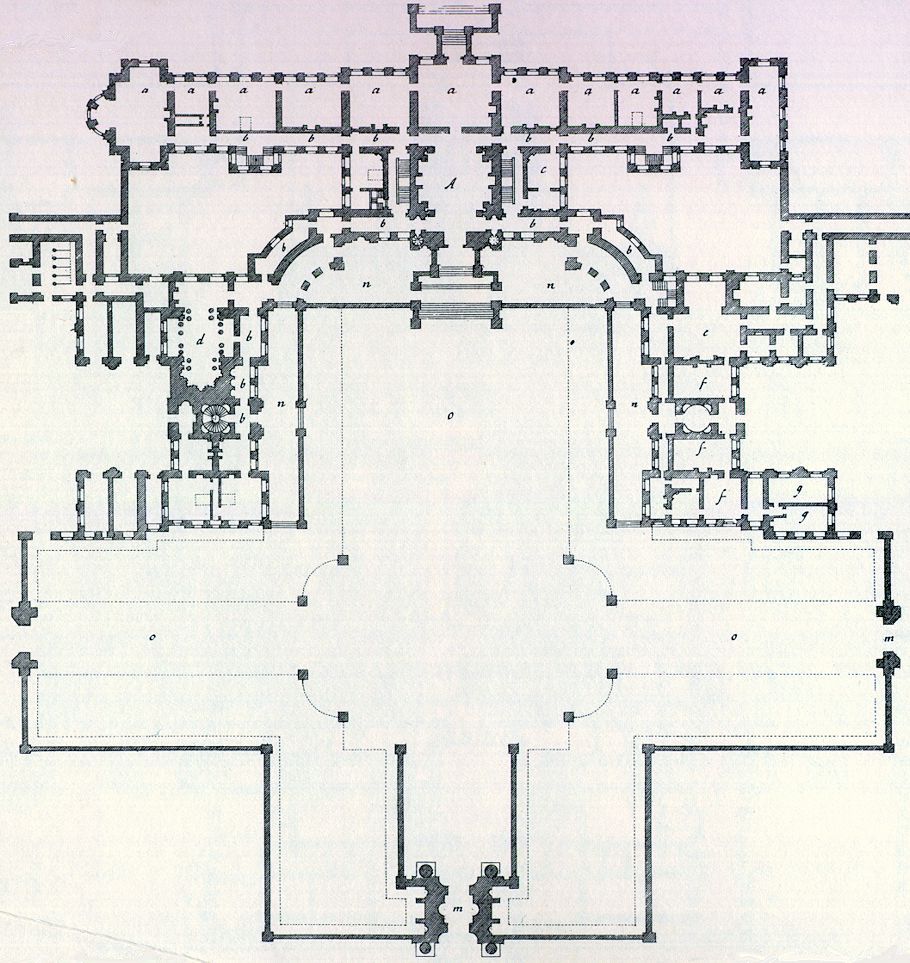
*What is ingenious about Vanbrugh's ground plan at Castle Howard was the way that it contrived to create the maximum visual effects of architectural scale and magnificence out of the minimum number of rooms. Both externally and internally it looked and felt like a much larger house than it actually was, if calculated in floor space.
--Charles Saumarez Smith, The Building of Castle Howard (1990), p. 55.
Will Your Work Be Remembered?
Since memory is really a mental reenactment, perhaps the better question is, "Will your work will be reenacted?"
Be careful though, because reenactment without giving credit to the source is plagiarism.
A bit of my work was 'remembered' by David R. Marshall in "Piranesi, Juvarra, and the Triumphal Bridge Tradition" (in The Art Bulletin, June 2003) when in footnote 155 Marshall states, "...but the Area Martis through to the Nympheum Neronis, including the Templum Martis is a hieroglyph of St. Peter's, to which it corresponds topographically." Marshall does not name the 1999 source of this information, however. Furthermore, Marshall's note is misinformation in that the Porticus Neroniani and not the Nympheum Neronis forms part of the 'hieroglyph'. (Note also how 'pagan - christian - triumphal way' follows immediately after the 'hieroglyph' within "Inside the Density of G.B. Piranesi's Ichnographia Campi Martii.)
Yes, a bit of my work has been reenacted, and I'll now make sure that it is remembered that David R. Marshall did the "reenacting."
5 August 2006
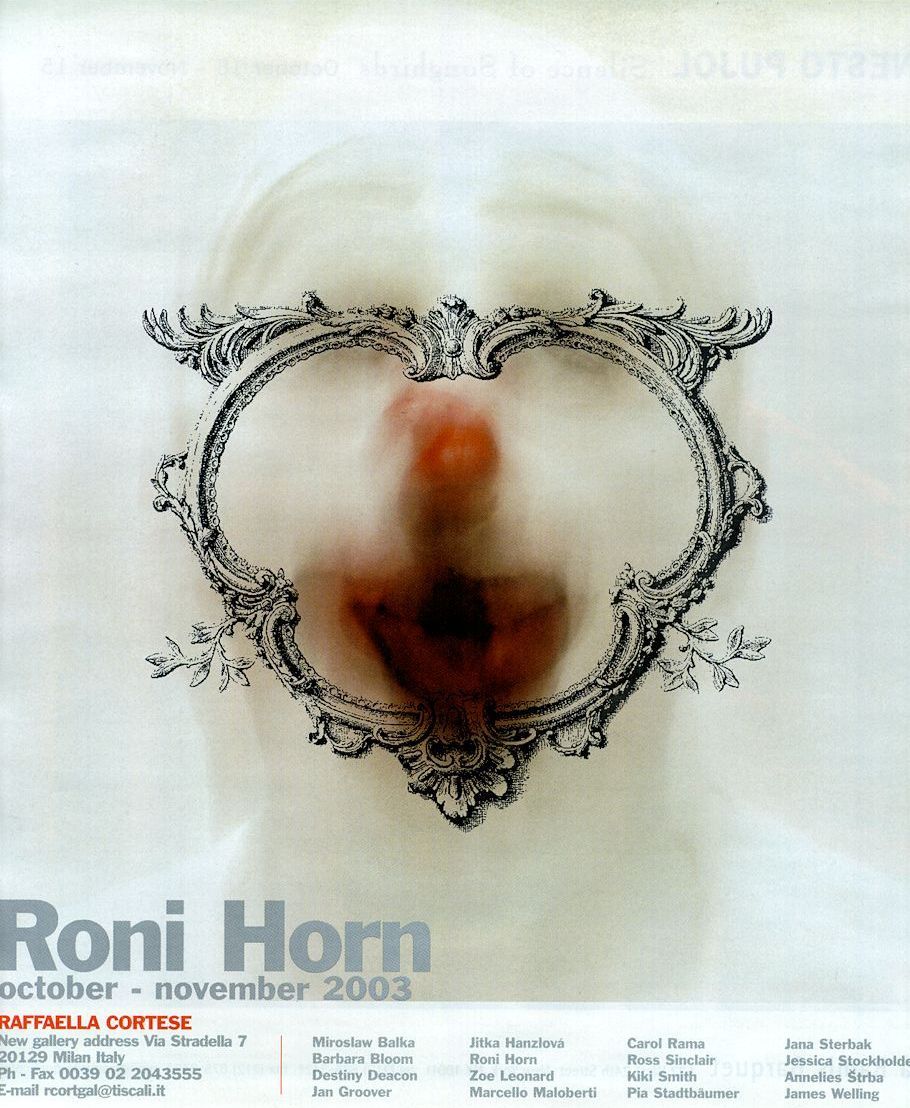
The Advertising of Art 017
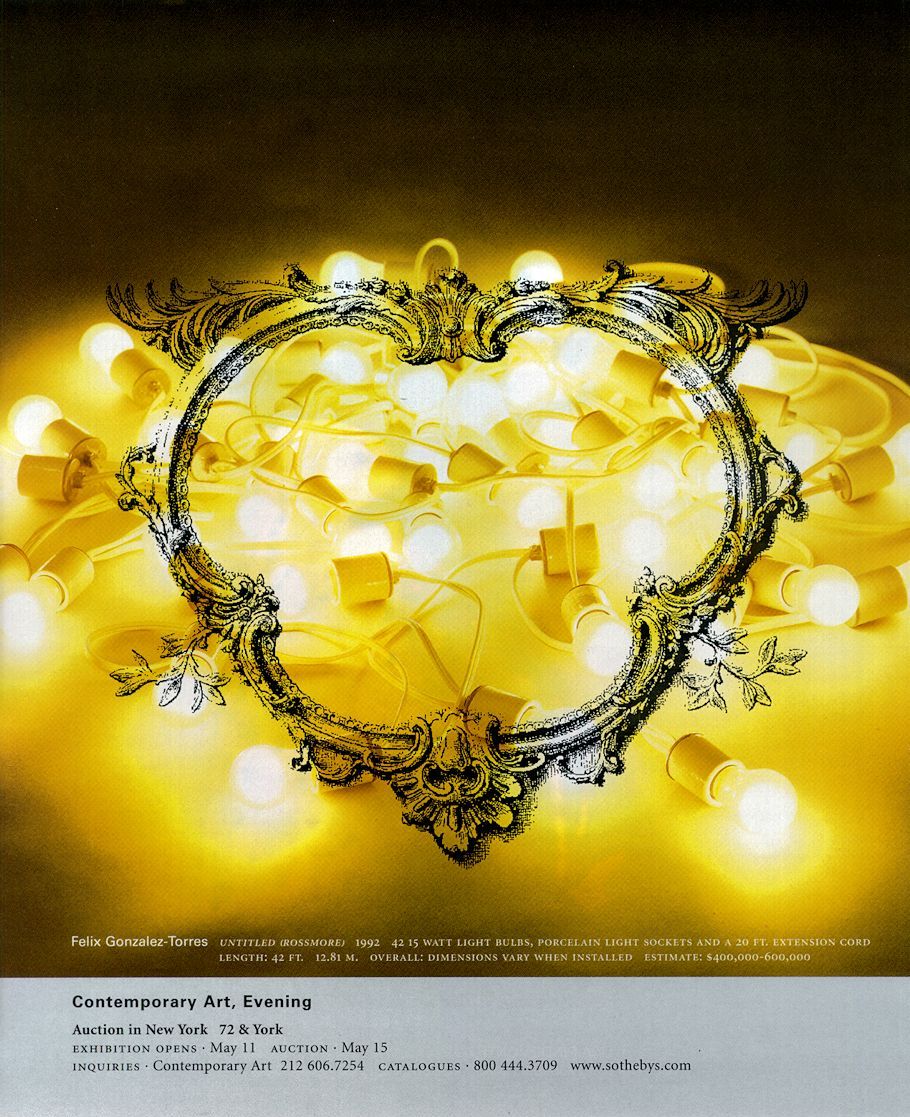
The Advertising of Art 024
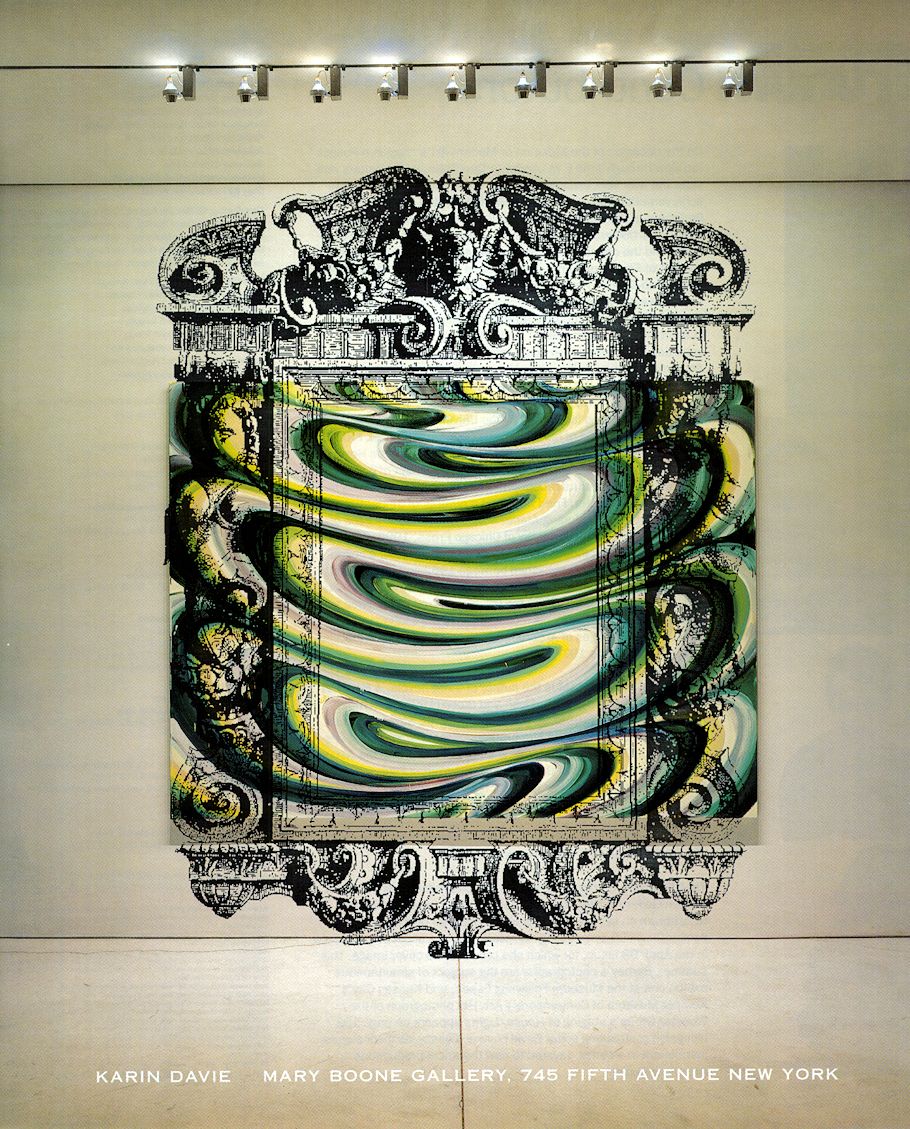
The Advertising of Art 026
5 August 2013
Art History
When dealing with history, creativity often involves (or even starts with) making the non-obvious choices.
Art History
I like art history because I like learning new things. If anything, art history is an ongoing lesson in exactly creativity, a way to sharpen the cutting edge, even.
5 August 2020
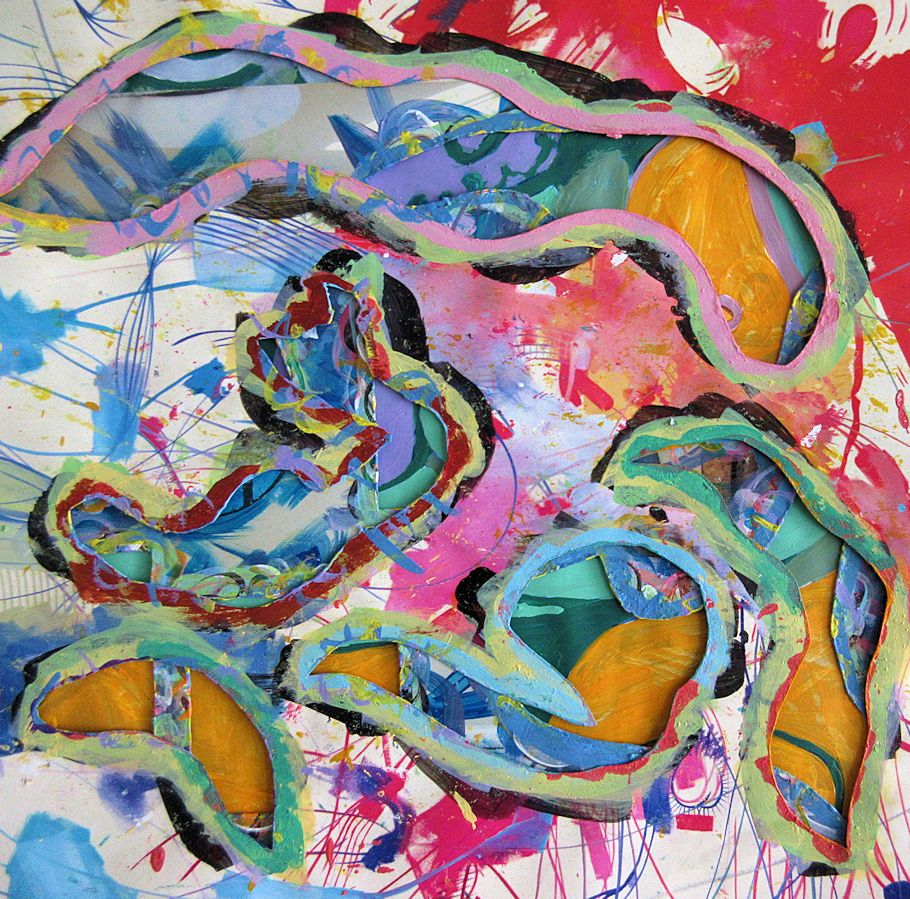
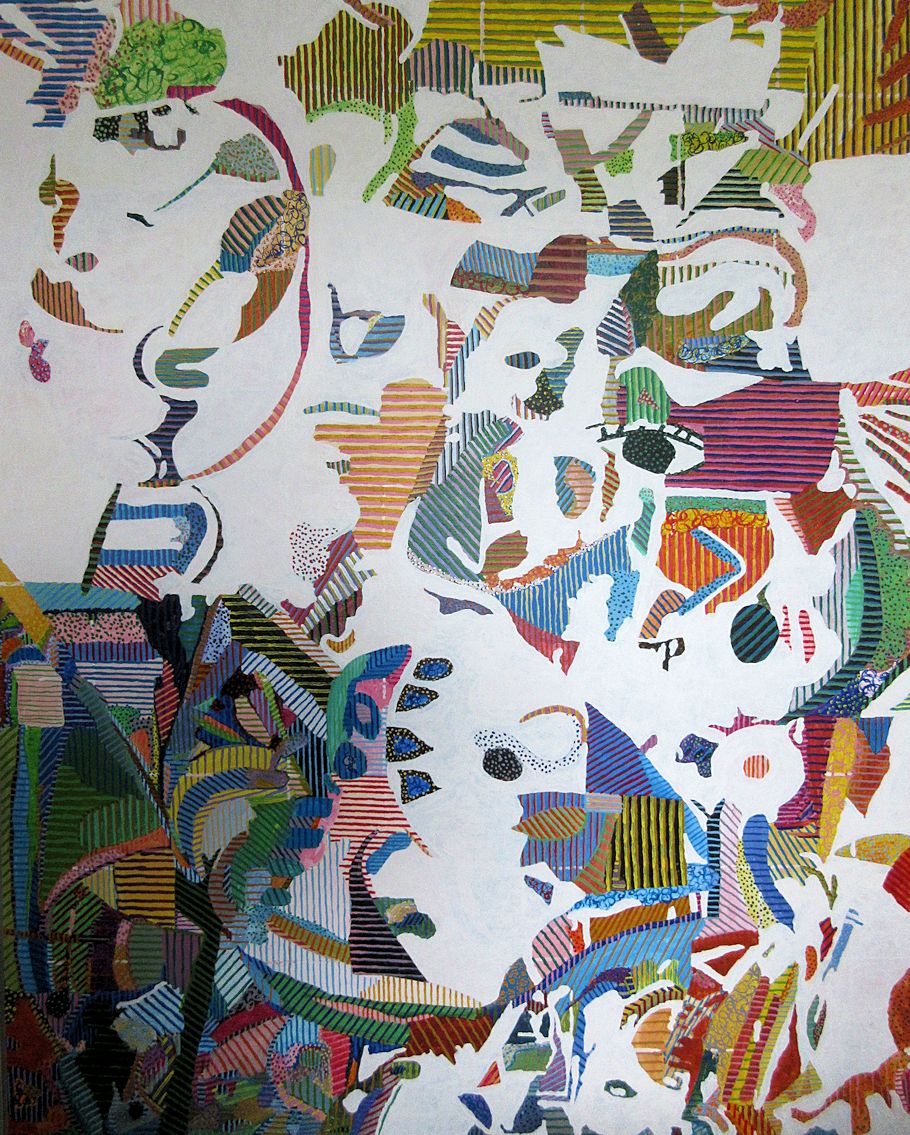
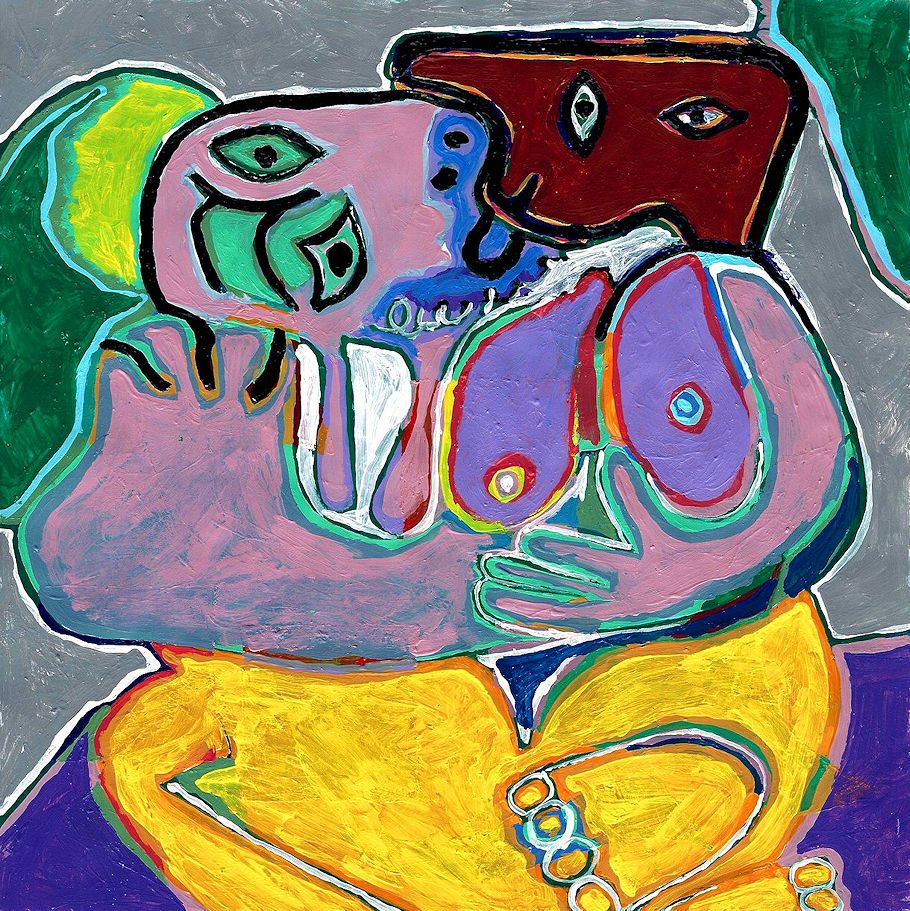
Mary Boone's 180 hours of community service hours 148 149 150 151
5 August 2023 Saturday
gratuitous hypothetical:
Bianconi was the first to write Piranesi's eulogy. Was I the first to (sort of, in English anyway) write Francesco's?
|